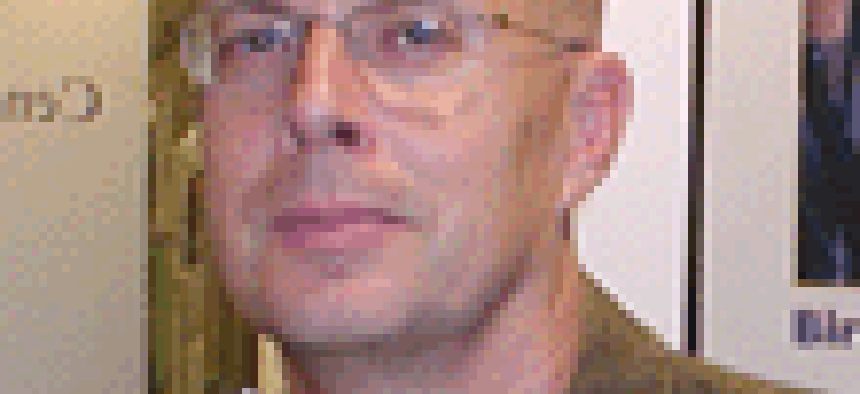Survival Guide: Perspectives from the field

The idea for David Alan Grier's new book, "When Computers Were Human" (Princeton University Press), didn't start with a fascination with numbers, although he has a doctorate in statistical computation. For the George Washington University professor, it began with a comment by his grandmother at one of the last meals they shared. "I wish I had used my calculus," she said.
The idea for David Alan Grier's new book, "When Computers Were Human" (Princeton University Press), didn't start with a fascination with numbers, although he has a doctorate in statistical computation. For the George Washington University professor, it began with a comment by his grandmother at one of the last meals they shared. "I wish I had used my calculus," she said.Those words triggered a search by Grier after her death. "I was dumbfounded. I had never heard of her doing math," he said. He soon discovered that his grandmother was one of six women who graduated in 1921 with a math degree from the University of Michigan.The search also uncovered legions of people, mostly women and minorities, who were the foot soldiers of science. With pencil and paper they worked complex equations, often in assembly line fashion. They calculated star positions for navigational charts, corrected survey plats and did the math for countless other problems that today are solved by electronic computers. Grier spoke recently with Editor Nick Wakeman about the legacy of human computers. How did human computers come about? The return of Halley's Comet in 1758 is a good starting point. This brought together three key things: calculus, which is the mathematics of motion, Newton's law of gravitation and the Industrial Revolution.A returning comet is a great test of Newton. If your computations are right according to Newton, then Newton's theory is right. As for the Industrial Revolution, we are starting to think about how we organize people for production. What made calculating the return of Halley's Comet a challenge? The tricky part is you have Jupiter and Saturn out there. Neptune and Uranus are out there, too, but [no one knew] about them. You have to know how Jupiter, Saturn and the sun move, and the equations for them are really tricky.But these three French mathematicians thought they could figure out Halley's orbit and predict when it would return. They figured out how to divide up the equations, and they were able to do it in six to eight weeks, instead of years. Why is that important to human computers? I started looking at the people who developed computational techniques, how they divided the labor and what kind of problems they had. There was a clear sense of production. People consciously turned to the model of divided labor that is outlined in ["Wealth of Nations" by] Adam Smith. They constantly returned to that as a touchstone. So this is a story of how business influences science. How were human computers used? The first use was navigation. You needed star charts calculated five years in advance. Surveying also was an important early use.The U.S. Coast Survey was on the Capitol grounds in the 1840s and 50s. Its organizational model was drawn from the military and business, and it had a large group of people who did the work. These were the computers. A small group of noncommissioned officers who knew some mathematics and some computation kept the group in line. Then there was a small group of officers who were the scientists.During the Depression the Works Projects Administration put together a group in New York. They picked 450 homeless people and gave them paper and pencil. Some didn't grasp negative numbers. Most didn't understand division.But they created an addition group, a subtraction group, a multiplying group and a teeny long-division group.There also was a team of otherwise unemployable mathematicians to be in charge: women, Jews, blacks, the handicapped. These were people with advanced degrees, but they were not going to get a job in mathematics during the Depression. They produced books of tables, and they did special work such as on the Manhattan Project [to produce the first atomic bomb]. What is the legacy of human computers? John Todd, who turned 96 in June, ran a computing group called the Admiralty Computing Service in England during World War II. The group was working on things such as navigation tables, ballistics tables and radio transmission tables for the British military.One day, an American scientist named John von Neumann comes to visit and becomes intrigued about how the groups work together. On the way back to London on the train, Todd and von Neumann sketch out a problem on paper and realize that it was all just a strict set of instructions. There was no judgment involved in solving the problem. That is when it dawned on von Neumann that computation was programmable.With human computers, they didn't call it programming, they called it planning. Von Neumann's papers talk about planning for coding. The word programming didn't transfer into that process until the 1950s.

WT:
Grier:
WT:
Grier:
WT:
Grier:
WT:
Grier:
WT:
Grier:

David Grier
Courtesy of David Grier
WT:
Grier:
WT:
Grier:
WT:
Grier:
WT:
Grier:
WT:
Grier:

